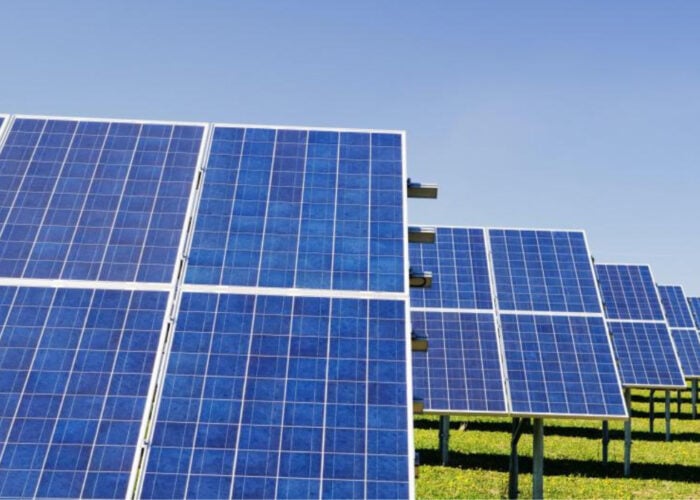Report on the Fluence Battery Energy Storage System Project in Victoria, Australia
Project Overview and Strategic Importance
A significant energy infrastructure project is underway in Victoria, Australia, involving the deployment of a 200MWh Battery Energy Storage System (BESS). Technology provider Fluence has been contracted to supply its advanced Mosaic software to optimize the system’s operation. This project is a critical step in modernizing the region’s energy grid, directly supporting Australia’s transition towards a sustainable energy future and aligning with several United Nations Sustainable Development Goals (SDGs).
Technological Contribution to Sustainable Infrastructure (SDG 9)
The BESS utilizes advanced grid-forming technology, enabling it to provide essential stability services to the electricity grid. This function is crucial for ensuring grid reliability as the share of variable renewable energy sources increases. The project’s core technological components include:
- Grid-Forming Inverters: These allow the BESS to operate independently to stabilize the local grid, a service traditionally provided by fossil fuel generators. This innovation is central to building resilient infrastructure as mandated by SDG 9 (Industry, Innovation, and Infrastructure).
- Fluence Mosaic Software: This AI-powered software platform optimizes the BESS’s participation in the energy market. It enhances the asset’s economic viability while ensuring it contributes effectively to grid stability, promoting the upgrade of technological capabilities in line with SDG 9.
Alignment with Key Sustainable Development Goals (SDGs)
The project’s impact extends across multiple SDGs, positioning it as a key contributor to national and global sustainability targets.
- SDG 7 – Affordable and Clean Energy: The primary contribution of the BESS is to facilitate the large-scale integration of renewable energy. By storing clean energy and dispatching it when needed, the system helps to:
- Increase the share of renewable energy in the final consumption mix.
- Ensure universal access to affordable, reliable, and modern energy services.
- Reduce reliance on carbon-intensive power generation.
- SDG 13 – Climate Action: By enabling a greater uptake of renewables and providing an alternative to fossil fuel-based grid services, the project directly addresses climate change. It strengthens the grid’s resilience and adaptive capacity to climate-related hazards, contributing significantly to climate change mitigation efforts as outlined in SDG 13.
- SDG 11 – Sustainable Cities and Communities: A stable and reliable power grid is fundamental for sustainable communities. This BESS project enhances energy security for homes and businesses in Victoria, making the region’s communities more inclusive, safe, resilient, and sustainable, in direct support of SDG 11.
- SDG 17 – Partnerships for the Goals: The collaboration between technology providers like Fluence and energy asset developers exemplifies the multi-stakeholder partnerships required to achieve the SDGs. This project serves as a model for public-private cooperation in deploying the technology needed for the global energy transition, fulfilling the spirit of SDG 17.
Conclusion
The 200MWh BESS project in Victoria, optimized by Fluence’s Mosaic software, represents a critical advancement in energy storage technology. Its role in stabilizing the grid and enabling renewable energy integration provides a clear pathway for achieving progress on SDGs 7, 9, 11, and 13. This initiative underscores the importance of investing in innovative and sustainable infrastructure to address the global challenges of climate change and energy security.
1. Which SDGs are addressed or connected to the issues highlighted in the article?
-
SDG 7: Affordable and Clean Energy
- The article focuses on a “200MWh battery energy storage system (BESS),” which is a critical technology for supporting the integration of renewable energy sources. By storing energy, BESS helps to ensure a stable and reliable supply of clean energy, directly contributing to this goal.
-
SDG 9: Industry, Innovation, and Infrastructure
- The project described involves the development of new, resilient energy infrastructure in Victoria, Australia. The use of advanced technology like Fluence’s “Mosaic software” and “grid-forming” capabilities represents innovation in the energy sector, aimed at creating a more sustainable and efficient industrial base.
-
SDG 11: Sustainable Cities and Communities
- A stable power grid is essential for the functioning of modern cities and communities. The BESS project enhances grid stability in Victoria, making the energy supply more resilient and sustainable for its inhabitants.
-
SDG 13: Climate Action
- Battery energy storage systems are key enablers for transitioning away from fossil fuels. By facilitating the use of more renewable energy, the project helps reduce greenhouse gas emissions from the power sector, which is a direct action to combat climate change.
2. What specific targets under those SDGs can be identified based on the article’s content?
-
Target 7.2: Increase substantially the share of renewable energy in the global energy mix.
- The article discusses a BESS, a technology that directly enables a higher penetration of intermittent renewable energy sources (like solar and wind) into the electricity grid, thereby helping to increase their overall share.
-
Target 7.a: Promote investment in energy infrastructure and clean energy technology.
- The deployment of a “200MWh” BESS by Fluence in Victoria is a clear example of an investment in modern, clean energy infrastructure and technology.
-
Target 9.1: Develop quality, reliable, sustainable and resilient infrastructure.
- The article highlights the BESS’s “grid-forming” capability, a feature specifically designed to improve the reliability and resilience of the energy infrastructure.
-
Target 9.4: Upgrade infrastructure and retrofit industries to make them sustainable… with greater adoption of clean and environmentally sound technologies.
- The project represents an upgrade to the existing energy infrastructure through the adoption of a clean technology (BESS) and advanced software (“Mosaic”) to make the energy system more sustainable.
3. Are there any indicators mentioned or implied in the article that can be used to measure progress towards the identified targets?
-
Indicator: Installed capacity of clean energy technology.
- The article explicitly states the capacity of the project as a “200MWh battery energy storage system (BESS).” This is a direct, quantifiable measure of the new clean energy infrastructure being added.
-
Indicator: Adoption of advanced and innovative technologies.
- The mention of “Fluence’s Mosaic software” and the system’s “grid-forming” capabilities are specific indicators of the adoption of advanced technologies designed to optimize and stabilize the energy grid.
-
Indicator: Investment in sustainable infrastructure.
- The project itself, a partnership between Fluence and a client in Victoria, Australia, serves as a concrete indicator of investment flowing into sustainable energy infrastructure.
4. Table of SDGs, Targets, and Indicators
| SDGs | Targets | Indicators |
|---|---|---|
| SDG 7: Affordable and Clean Energy | 7.2: Increase substantially the share of renewable energy in the global energy mix.
7.a: Promote investment in energy infrastructure and clean energy technology. |
The capacity of the “200MWh battery energy storage system (BESS).” |
| SDG 9: Industry, Innovation, and Infrastructure | 9.1: Develop quality, reliable, sustainable and resilient infrastructure.
9.4: Upgrade infrastructure… with greater adoption of clean and environmentally sound technologies. |
The deployment of “grid-forming” BESS technology.
The use of “Fluence’s Mosaic software.” |
| SDG 11: Sustainable Cities and Communities | (Implied) Target 11.5: Significantly reduce the number of deaths and the number of people affected and substantially decrease the direct economic losses relative to global gross domestic product caused by disasters, including water-related disasters, with a focus on protecting the poor and people in vulnerable situations (by enhancing grid resilience against climate-related disruptions). | The development of resilient energy infrastructure in “Victoria, Australia.” |
| SDG 13: Climate Action | 13.2: Integrate climate change measures into national policies, strategies and planning. | The implementation of a large-scale BESS project, which is a practical climate change mitigation measure. |
Source: energy-storage.news







